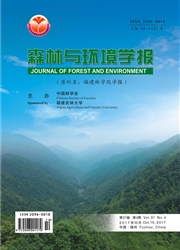

 中文摘要:
中文摘要:
对灵石山次生林的2种优势乔木和3种优势灌木的比叶面积差异及其不同海拔资源位的变化规律进行分析。结果表明,米槠[Castanopsis carlesii(Hemsl.)Hayata.]与猴欢喜(Sloanea sinensis)2种乔木的比叶面积总体呈现随海拔升高而降低的趋势;围涎树(Irenina pithecollobii)、罗伞树(Ardisia quinquegona)和九节木(Psychotria rubra)3种灌木的比叶面积也出现随海拔升高而降低的趋势,但不明显;不同海拔资源位的2种优势乔木和3种优势灌木比叶面积之间具有显著差异;不同海拔资源位的同种乔木比叶面积具有显著差异;不同海拔资源位的灌木优势树种间的比叶面积也具有显著差异。因此,可以认为福建东南海岸带山地环境下植物对较小的环境变化都会产生明显的叶形态特征响应。
 英文摘要:
英文摘要:
The SLA (specific leaf area) of 2 dominant arbors and 3 shrubs in secondary forests of Lingshi Mountain and its variation in elevational resource niches were analyzed. The result showed that SLA of Castanopsis carlesii, Sloanea sinensis (arbors), lrenina pithecollobii, Ardisia quinquegona and Psychotria rubra (shrubs) generally decreased with elevation. There were significant differences between SLA of arbors and that of shrubs, between 2 arbors and among 3 shrubs in multi-elevation resource niches. The foliar morphology of plants in hilly regions of Fujian southeastern coastal zones responded with even micro environmental changes.
 同期刊论文项目
同期刊论文项目
 同项目期刊论文
同项目期刊论文
 期刊信息
期刊信息
